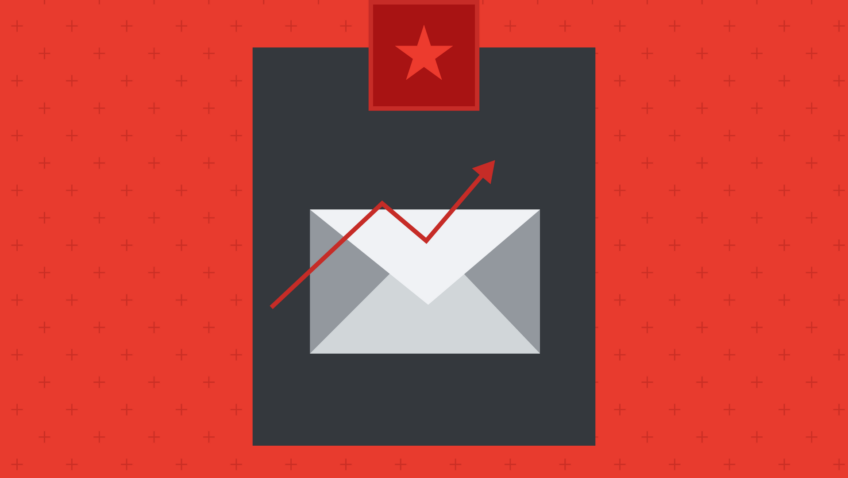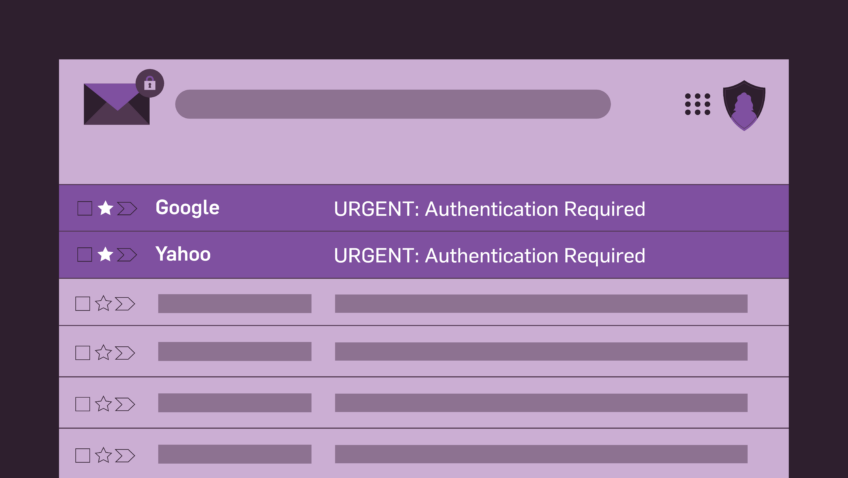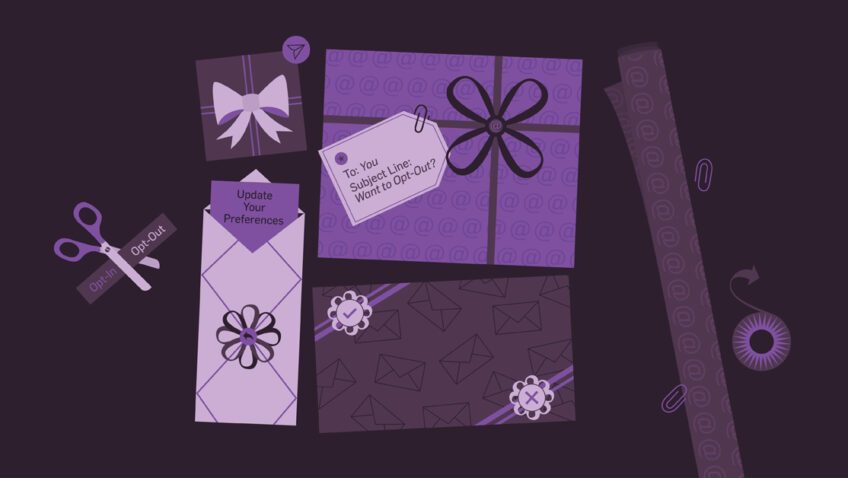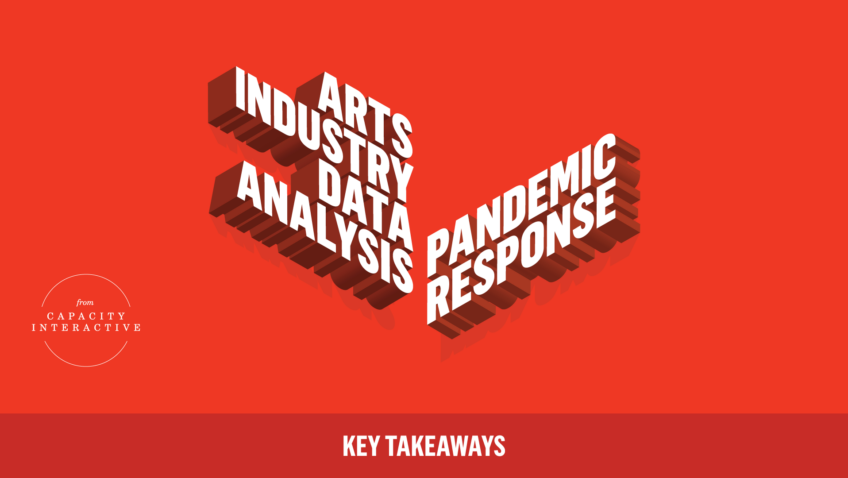Level Up Your Email Marketing
It’s no secret that email is still an important channel for arts marketers. 87% of arts buyers regularly hear about upcoming performances through email, and email continues to deliver the highest return on investment (ROI) for marketers across all industries.
Even with these stats in mind, it’s easy to feel like you’re stuck in a cycle. You might get in the habit of only sending emails when a performance or exhibition goes on sale. Or, you’re looking for a solution that will help you automate email processes to get valuable time back in your day.
We’ve outlined several different ways to help you get out of a rut and level up. These are achievable steps that will set your organization apart from the oversaturated inbox crowd.
Level 1 – The Standard Campaign: An Oldie but a Goodie
We get it. Dynamic information and automated emails are flashy and fun, but sometimes, your technical set-up doesn’t allow for it. The good news is, you can still level up. Even with standard campaigns, there are ways to make your emails as anticipated, personal, and relevant as possible.
How? Segmentation. You’ve just spent hours finessing the spacing between your paragraph and your image, tweaking each word so that your copy perfectly flows, endlessly Googling how to change the color of a single word in HTML and finally spent days getting your templates approved by the powers that be. So now you want to make sure that everyone that has ever come in contact with your organization gets to see your email, right? Wrong.
Before hitting “send,” take a second to look at who you’re sending to. That person that hasn’t opened an email from you in three years probably won’t open this one either. That donor who gave $10,000 last year probably doesn’t want to become a member at the $100 level.
Unlike paid ads, sending an email to extra people is often pretty inexpensive, if not free, when it comes to media dollars. But that doesn’t mean you want to be sending emails to users that don’t want them. That’s a good way to get them to unsubscribe in their next inbox purge. Save it for something they do want.
Level 2- Become a Dynamo of Dynamic Information
So you’ve mastered the art of segmentation and now your email open rates and click rates are higher than ever. It’s time to upgrade to using dynamic information.
Dynamic information is any information within your email that will appear differently depending on who is receiving the email. For example, you can use a patron’s first name, just as it appears in this email from Cal Performances.

Adding a “Dear First Name” is one of the easiest ways to make your emails more personal. Even better? Try personalizing the subject line with a first name and watch your open rates skyrocket. Dynamic information can even dictate entire portions of an email (our friends at WordFly made this even easier with their new Blocks feature).
One of our favorite examples is Opera Philadelphia’s “Need assistance?” block at the bottom of all of their emails. The information in this block changes based on whether or not a user is a member. If they’re a member, they’ll get a special thanks for their support, information about their membership, and a link to view their benefits. Non-members get a link to sign-up for a membership.


If you want to start adding dynamic information, start small, and work your way up to more advanced methods. Perhaps your next newsletter mentions a user’s upcoming performance, or your year-end membership email recaps the money that a patron has given.
Any patron information in your database can be used to personalize an email, and oftentimes, your database and email service provider don’t even have to be linked. A simple CSV export could do the trick.
Level 3 – With Everything on Your Plate, It’s Time to Automate
Triggered emails are where things start to get fun. A triggered (or automated) email is any email that is sent automatically based on a specific action that a user took.
Not only do triggered emails perform better than standard emails, but they’ll also save you a ton of time after the initial set up. Much like dynamic information, if this is your first foray into automated emails, it’s best to start simple.
The low hanging fruit of triggered emails is pre- and post-performance emails. There’s a big chance that your organization is already sending these, and if you’re not automating them, you should start.
Here’s an example of a post-performance email from Cal Performances. For context, this was for a presentation of Scott Silven, an illusionist (and if you’re looking for five minutes to kill, the video on that landing page is a must-see).

This post-performance email was automatically sent to everyone who attended the performance. It opens with a post-show reaction video from other audience members and an SF Chronicle review. It closes out by giving the user an easy way to share their experience. Simple, easy, yet an incredibly valuable way to keep the “delight” portion of the flywheel spinning.
Other triggered emails can include a welcome email to new ticket buyers or newsletter subscribers, a renewal message for members, or a simple birthday message. If you’re really looking to step up your automation game, check out how Opera Philadelphia used Behavior Infuser to send abandoned cart and abandoned browse emails and brought in more than $130,000.
Level 4 – Don’t Go Chasing Waterfalls Cascades
Cascades. The crème de la crème of email marketing. A cascade is a series of triggered emails that are sent to a user over a longer period of time. One of the best ways to start is with a welcome cascade.
Here’s a two-part welcome cascade example from Cincinnati Symphony Orchestra.
The first email a user receives is a great orientation email. It provides information about the orchestra, a chance to ask questions, and some content offerings.
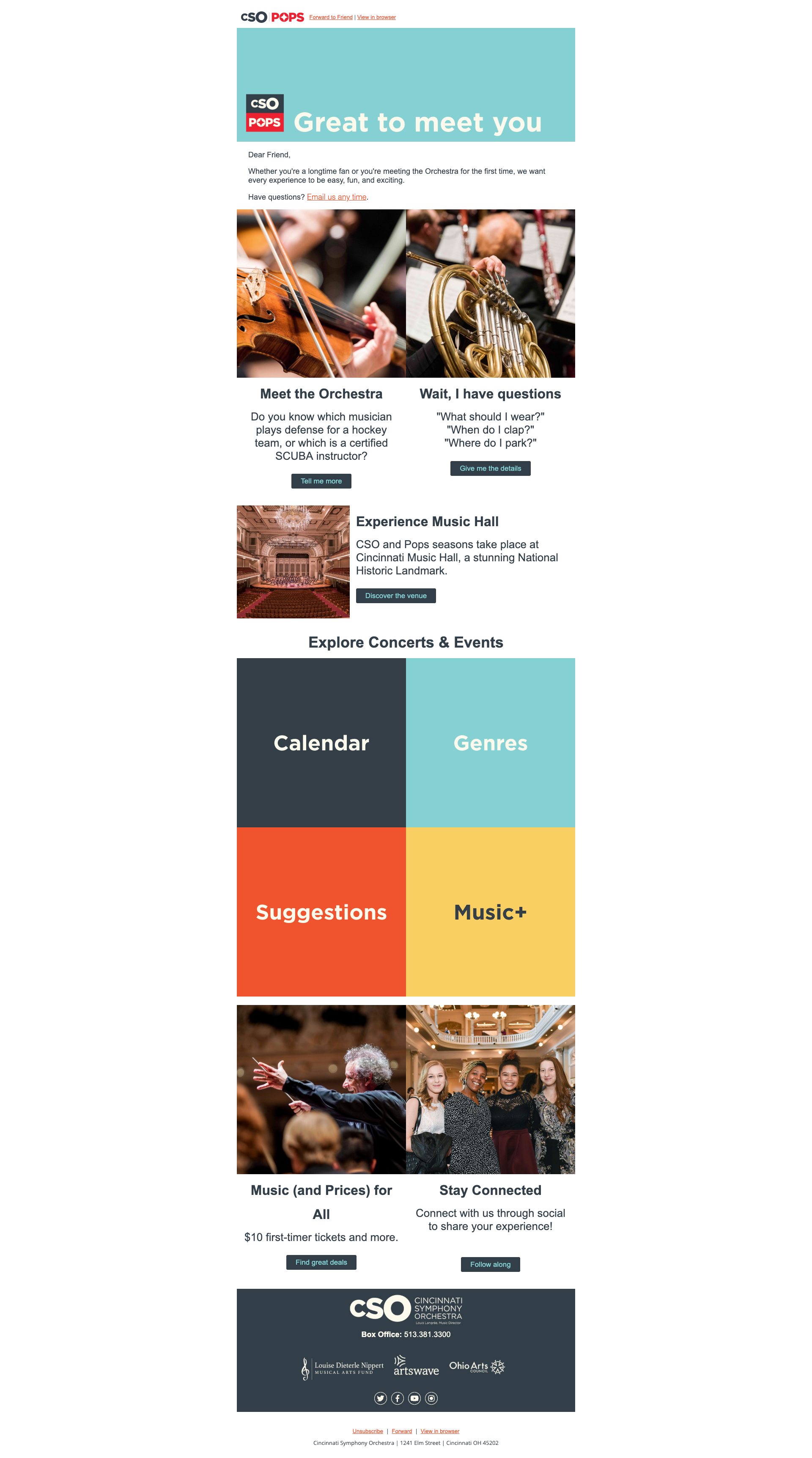
The second email has a very specific ask for more information about the user, in addition to some great video content. Just as a reminder – everything we’ve covered in this blog post requires information about your constituents. The best way to get that information? Just ask!

The National Ballet of Canada takes things even further with a four-part welcome cascade. You can watch Belinda Bale, Senior Associate Director of Communications, walk us through each part of their cascade at Digital Marketing Boot Camp for the Arts.
You can try other cascades, like separate welcome cascades for members, a post-performance cascade, or a cascade after a user purchases a ticket.
No matter where you are in your email marketing journey, there’s always room to take it up a level. Take a look at your current initiatives, and see where there might be room to grow!

